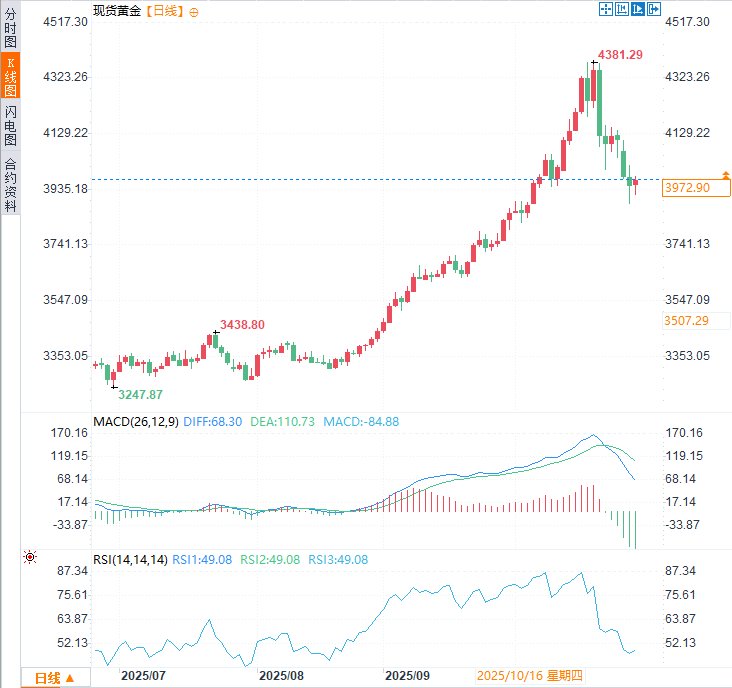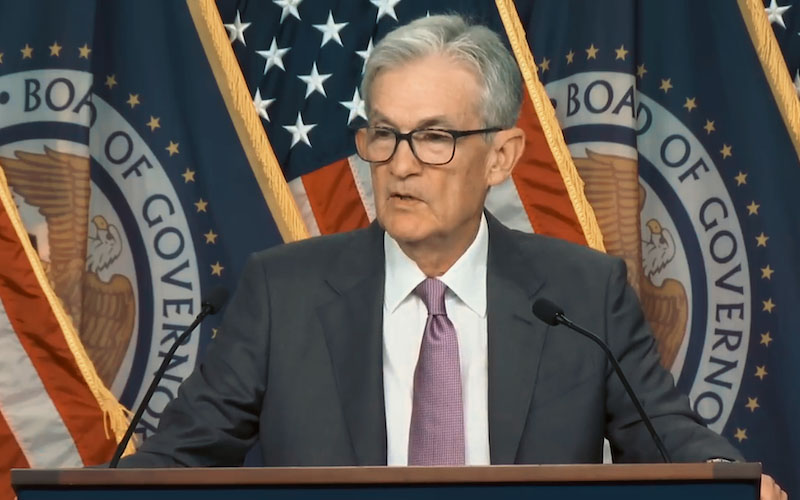Could the recent plunge in gold be a fakeout? Key bullish levels revealed, awaiting the Fed's final word.
2025-10-29 09:16:44
Gold has recently broken down, and the core question is: Is the current trend a peak signal, or a temporary fluctuation before the gold trend reverses? Even if there are some short-term bearish signs, it is still too early to turn bearish on the long-term trend of gold.

Bearish momentum keeps bulls on the sidelines
At the start of this week, bearish momentum in gold accelerated, continuing the technical correction from historically overbought levels last week. Gold prices have now broken through several key support levels—most importantly the psychological level of $4,000—a break that triggered technical selling and a wave of long liquidation.
This gold price pullback isn't an isolated event. It comes amidst a general resurgence in risk sentiment amid expectations of a easing of trade frictions and further interest rate cuts by major central banks. Major indices like the S&P 500, Nasdaq 100, and FTSE 100 have all hit new all-time highs, which naturally dampens the appeal of safe-haven assets like gold.
The game between risk appetite and risk aversion
As mentioned earlier, the decline in gold prices coincided with renewed optimism in the market regarding trade talks between the two major economies. President Trump recently expressed optimism, saying he was "deeply optimistic" that a deal could be reached.
Although this has improved market sentiment, most analysts believe that core issues such as national security and technological competition are far from resolved. However, the market has now accepted this high-risk environment, weakening the safe-haven demand for gold.
The Federal Reserve meeting affects gold prices
Looking ahead, while paying attention to the meeting between the leaders of the two major economies, the market's attention is focused on the Federal Reserve's interest rate decision to be announced on Wednesday local time (early Thursday morning Beijing time).
A rate cut is now a foregone conclusion, but the key question is whether the Federal Reserve will signal further rate cuts. If it does so, the dollar may come under pressure, while gold and bonds could rebound. Therefore, the degree of dovishness from the Fed may determine the short-term bottom for gold prices.
Can gold prices retake the $4,000 mark?
From a technical perspective, the trigger for this decline is clear. After last week's low of $4,005 was breached, numerous stop-loss orders were triggered, causing a rapid and brief decline in gold prices. From that point, the price of gold has plummeted by over $100, reaching a weekly low of $3,886.51. It is currently finding support around $3,900.

(Spot gold daily chart, source: Yihuitong)
If gold can recapture the $4,000 mark and hold above it, it will send a strong bullish signal, indicating that the long-term upward trend remains solid.
However, if gold prices continue to hover below $4,000 in the coming days, it can be largely concluded that a short-term top has formed. Selling pressure may persist until gold prices regain their appeal, or market risk sentiment shifts and investors seek safe-haven assets again.
In short, gold is facing triple pressure: a rebound in risk appetite, a technical breakout, and a strong stock market rally. However, given the upcoming Federal Reserve meeting, a shift in policy tone could inject new momentum into the bulls. The outlook for gold may still hold promise—even though it currently appears shrouded in uncertainty.
At 9:16 Beijing time, spot gold was trading at $3,974.72 per ounce.
- Risk Warning and Disclaimer
- The market involves risk, and trading may not be suitable for all investors. This article is for reference only and does not constitute personal investment advice, nor does it take into account certain users’ specific investment objectives, financial situation, or other needs. Any investment decisions made based on this information are at your own risk.





















